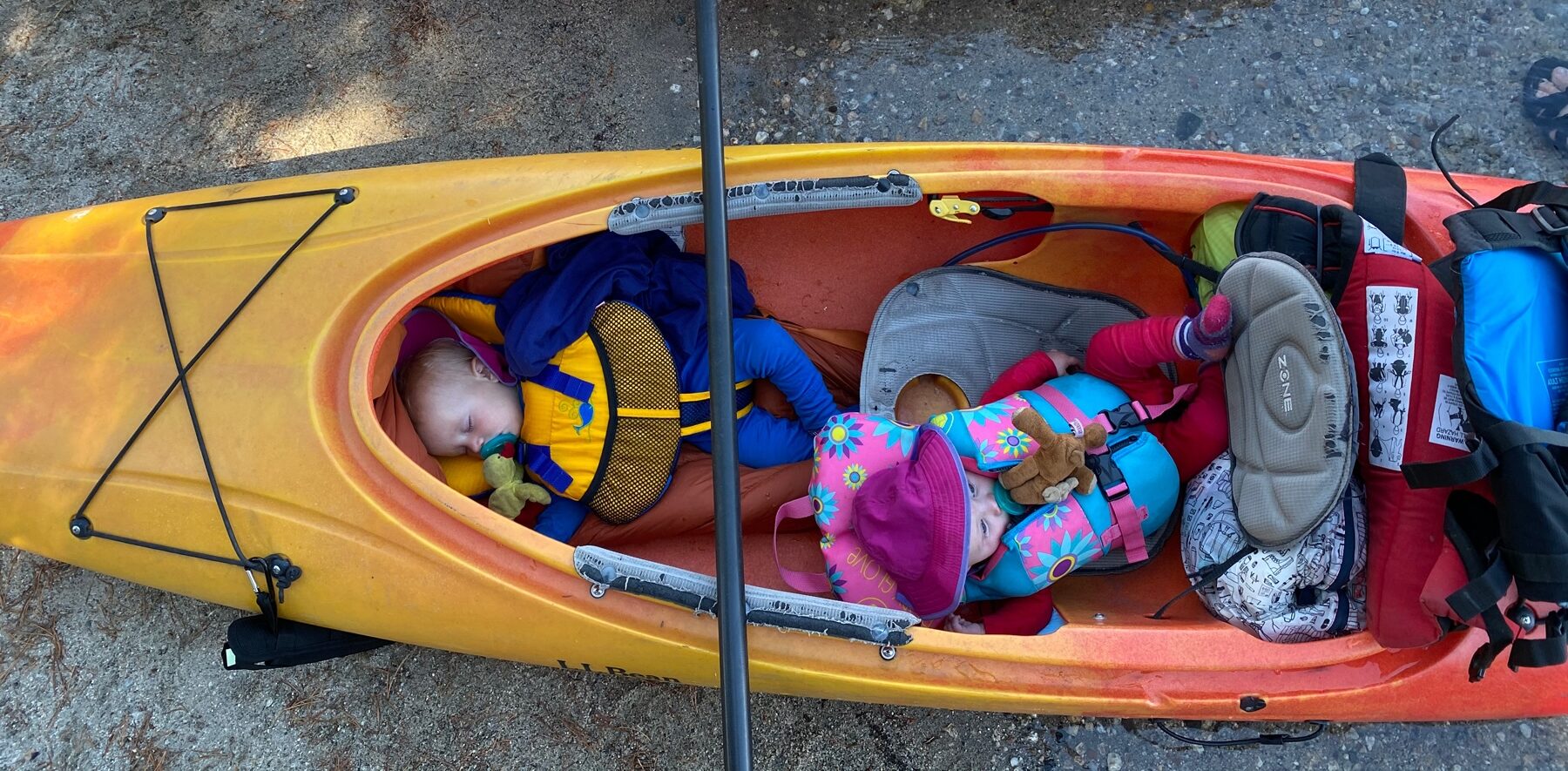By Samantha Nock // Photography by Karissa Akin
—
Backpacking with your baby might sound daunting, but with the right preparation and mindset, it can be incredibly rewarding for both parents and children. From exploring nature’s wonders to fostering a love for the great outdoors, backpacking offers an opportunity to bond and create lasting memories.
The key to any trip with a little one is to start small. Typically, you’ll want to stay close to home, don’t overdo it on the mileage, and spend only one or two nights away. I like to hike during naptime, and then make frequent stops to take my baby out of her carrier. I allow time for diaper changes, snacks, and playtime. Your baby’s first backpacking trip should be entirely about them. Make it a time for her to experience the enjoyment in the journey and establish a love for the great outdoors.
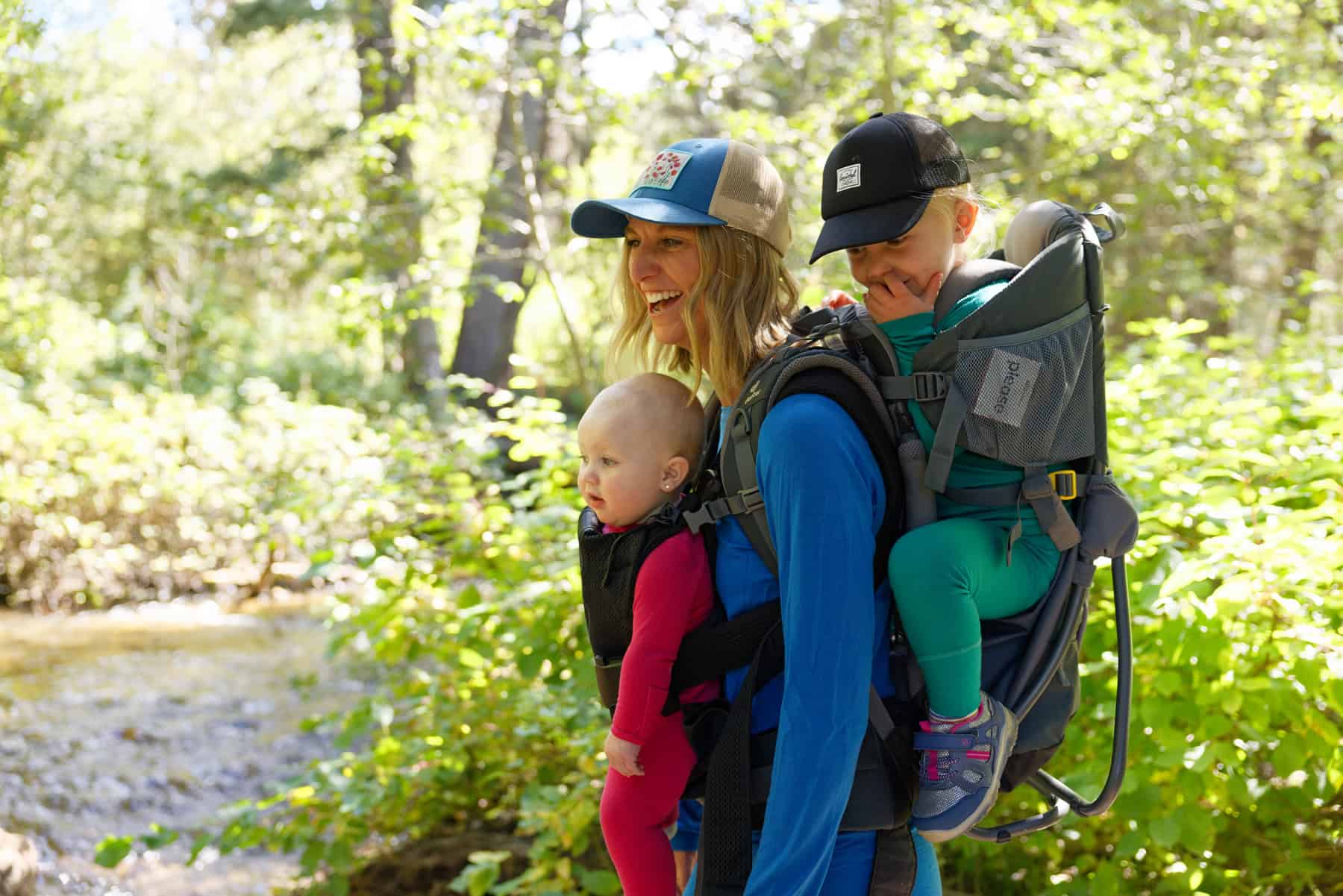
Also, don’t be afraid to change your plans, whether it’s before or during the trip. Flexibility is crucial in the outdoors, especially when babies are involved. After a few successful car-camping trips with our daughter, my husband and I took her on an overnight canoe trip on Leigh Lake when she was 11 months old. Next, we decided it was time for our first actual backpacking trip in the Bechler region of Yellowstone. Originally, our plans included a car drop-off and a one-way trip with two nights of camping. Instead — realizing we were biting off more than we should — we opted to park at the exit, do an out-and-back hike, and stay only one night.
A lot of people are amazed that my husband and I continue to adventure, even with a little one in tow, but I am so glad we’re making the effort. If this seems like a fun endeavor for your family, too, here are some tips to keep the journey relatively painless (aside from your aching back).
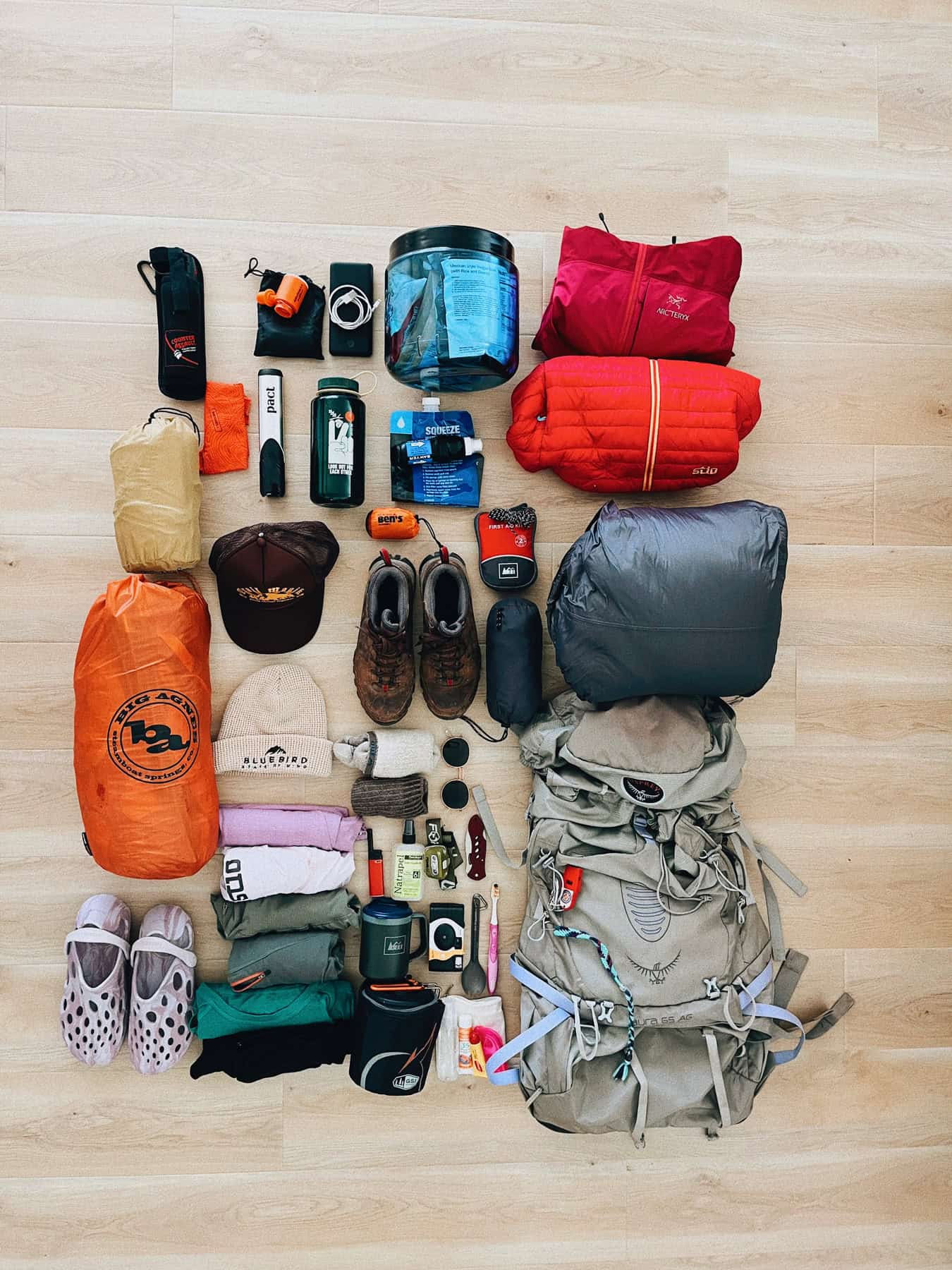
Gear Essentials
Preparation is key. In addition to your own equipment, any trip into the wilderness with a baby or toddler comes with its own list of essentials. (Use this as a starting point, adjusting and adding to it according to your family’s needs.)
Child Carrier:A sturdy and comfortable child-carrier backpack provides ample support for both the parent and the baby. Look for an adjustable one. I use the Osprey Poco (Teton Mountaineering; tetonmtn.com), which adjusts to fit my 5-foot, 4-inch frame, as well as my husband’s, who is a foot taller than me. This pack includes a secure harness system for the child’s safety and comfort during long hikes. Another great option for toddlers — who want to get down and walk on their own, then later be carried — is the Trail Magik Kid Carrier (trailmagik.com).
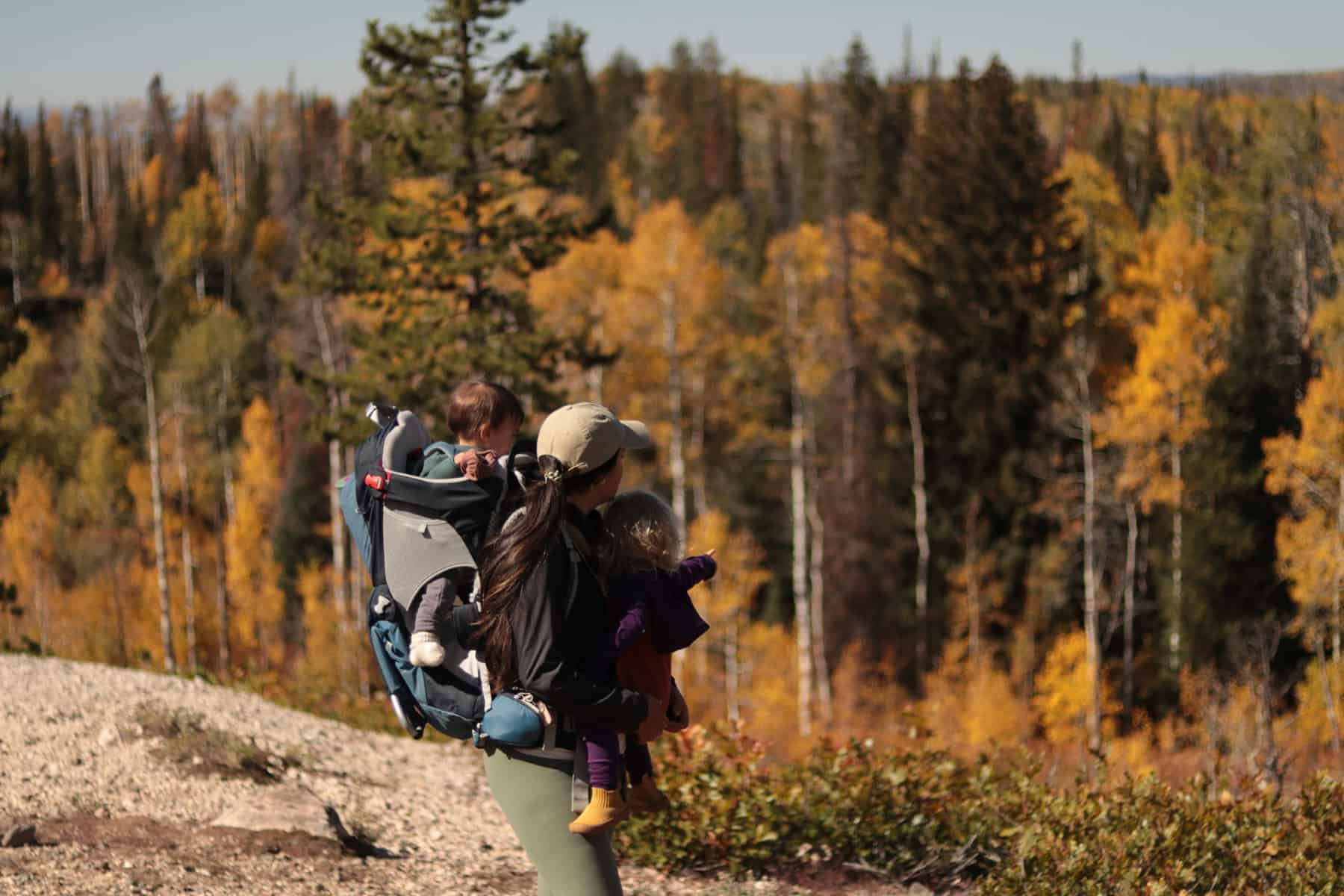
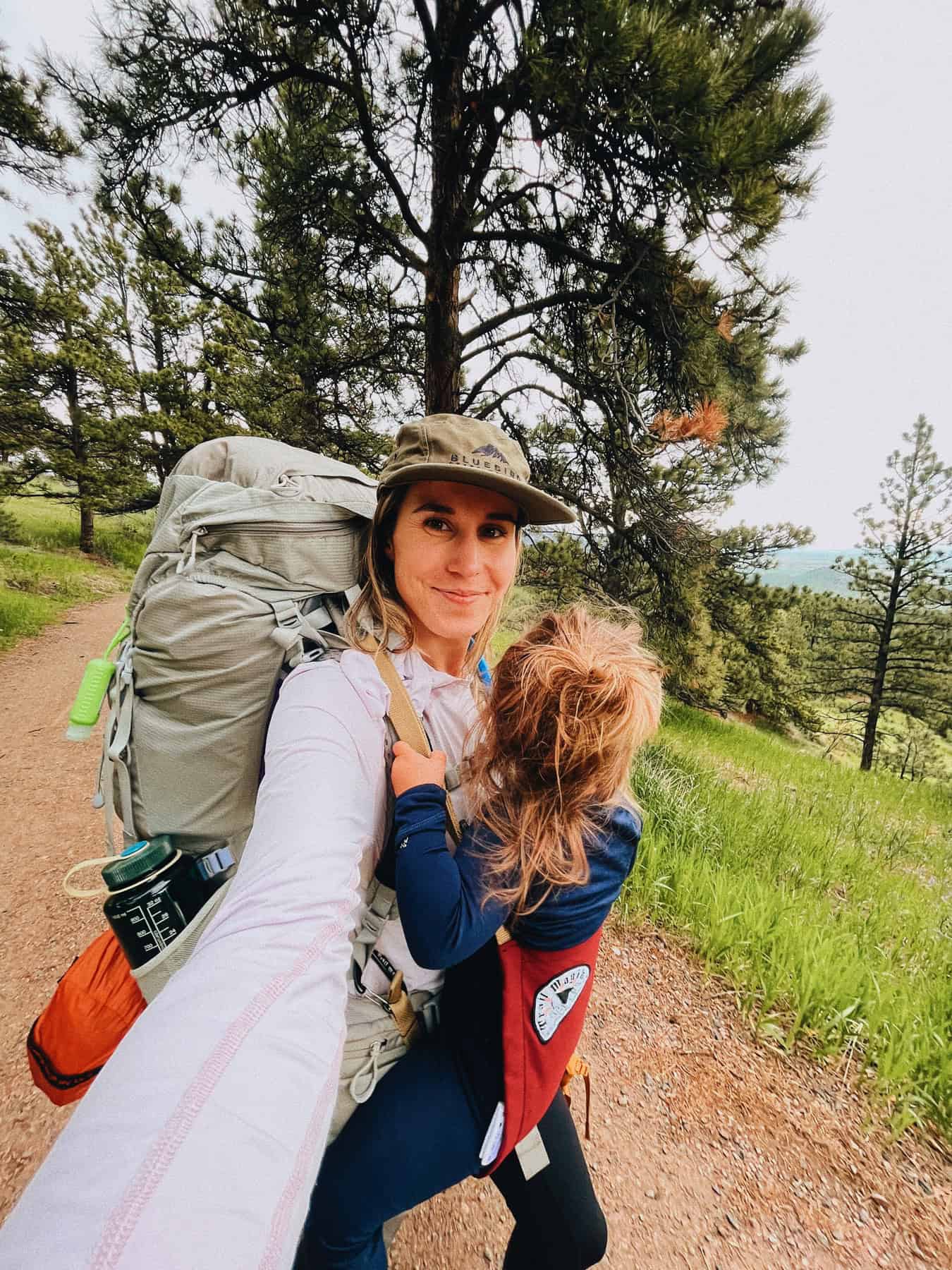
Clothing: Baby clothing should be lightweight, fast-drying, and offer sun protection. I use Iksplor’s merino wool base layers (iksplor.com). The natural fibers keep little ones warm when it’s cool and cool when it’s warm. The base layers also have a natural UPF of 50, and they’re moisture-wicking and antimicrobial. When it’s time to head to bed, just add wool socks and a merino beanie.
Sun Protection: Shade is crucial for babies, as the sun can be brutal at elevation. So, in addition to having the sunshade up on our baby carrier, we make sure our daughter wears a hat and mineral-based sunscreen. She usually doesn’t keep her sunglasses on, so we opt for a hat with a wide brim (JD High Country Outfitters; jdhcoutfitters.com).
Bug Protection: To keep bugs at bay, I use NATPAT Buzz Patch Mosquito Patches (natpat.com). Simply stick one on your baby’s hat and back, and on your backpack. Just make sure it’s out of reach, so she can’t put it in her mouth. I sometimes opt for the baby bug shirt we found at Headwall Sports (headwallsports.com). It makes her look like a little beekeeper and keeps the bugs at bay all day!
Food and Hydration: I always advise bringing a backup water source, like the Katadyn BeFree water filter (Skinny Skis; skinnyskis.com). On my baby’s first trip, our water filter broke. Normally this would have been devastating, but we had a backup filter. Additionally, snacks are king on the trail. Whenever stops are needed, just break out your little one’s favorite snacks to keep them occupied.
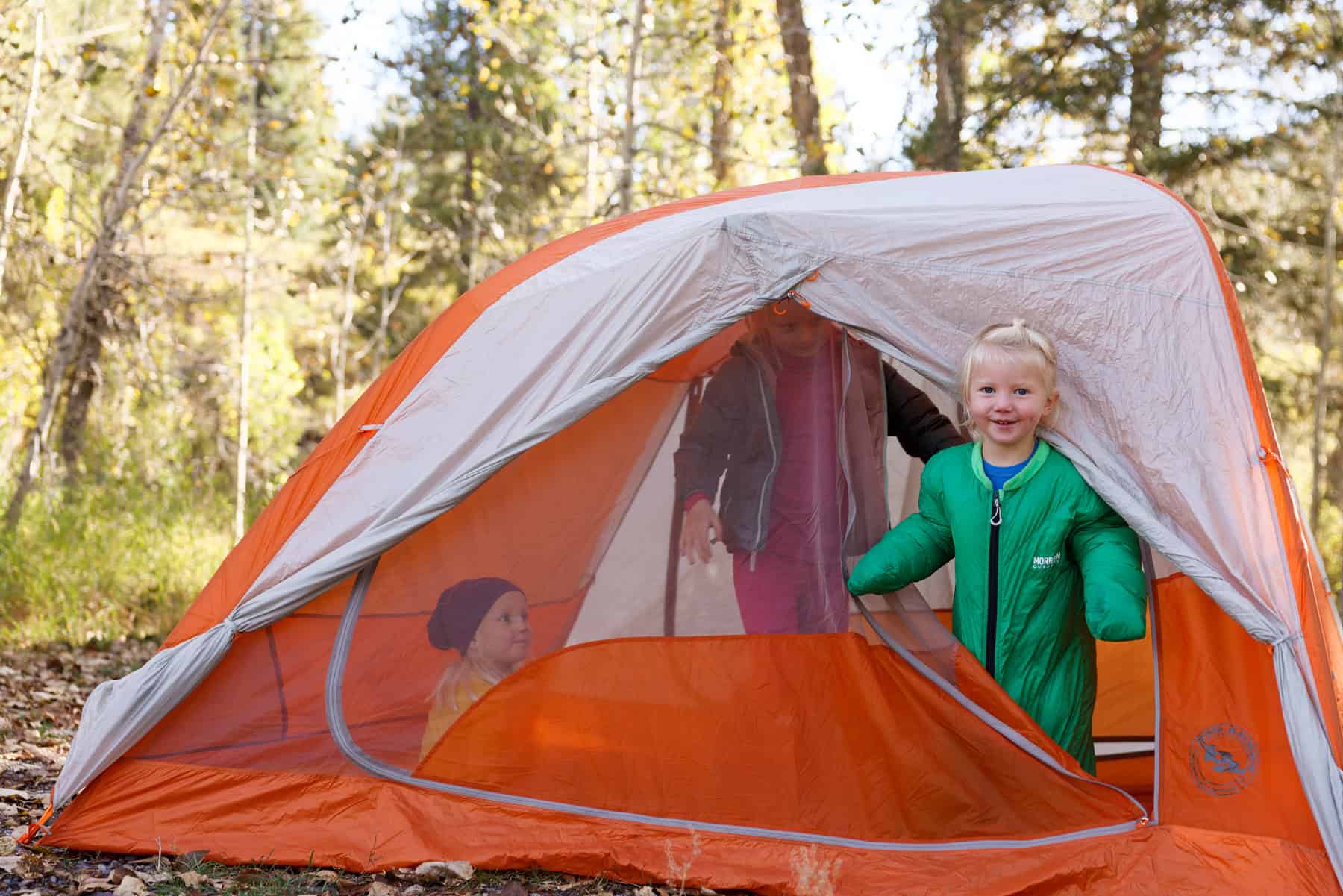
Sleep Safety
When camping, it is important to remember the American Academy of Pediatrics’ general guidelines for safe infant sleep. This includes placing your baby on her back to sleep, making sure her sleeping bag fits well, and dressing her appropriately for the weather.
Finding a baby sleeping bag that is safe and warm can be tricky. My go-to is the Morrison Outdoors Little Mo Sleeping Bag (morrisonoutdoors.com). This bag has arms, and zips around the child’s neck, reducing the risk of suffocation. It’s made from breathable materials, so your little one won’t be in danger of overheating. The Little Mo also has a zipper that opens from the bottom, allowing quick and easy access for diaper changes.
Make sure to choose a closed-cell foam sleeping pad for your baby, instead of an inflatable one, to reduce the risk of suffocation or entrapment. My husband and I each sleep on inflatable pads, with my baby next to me on her closed-cell foam pad.
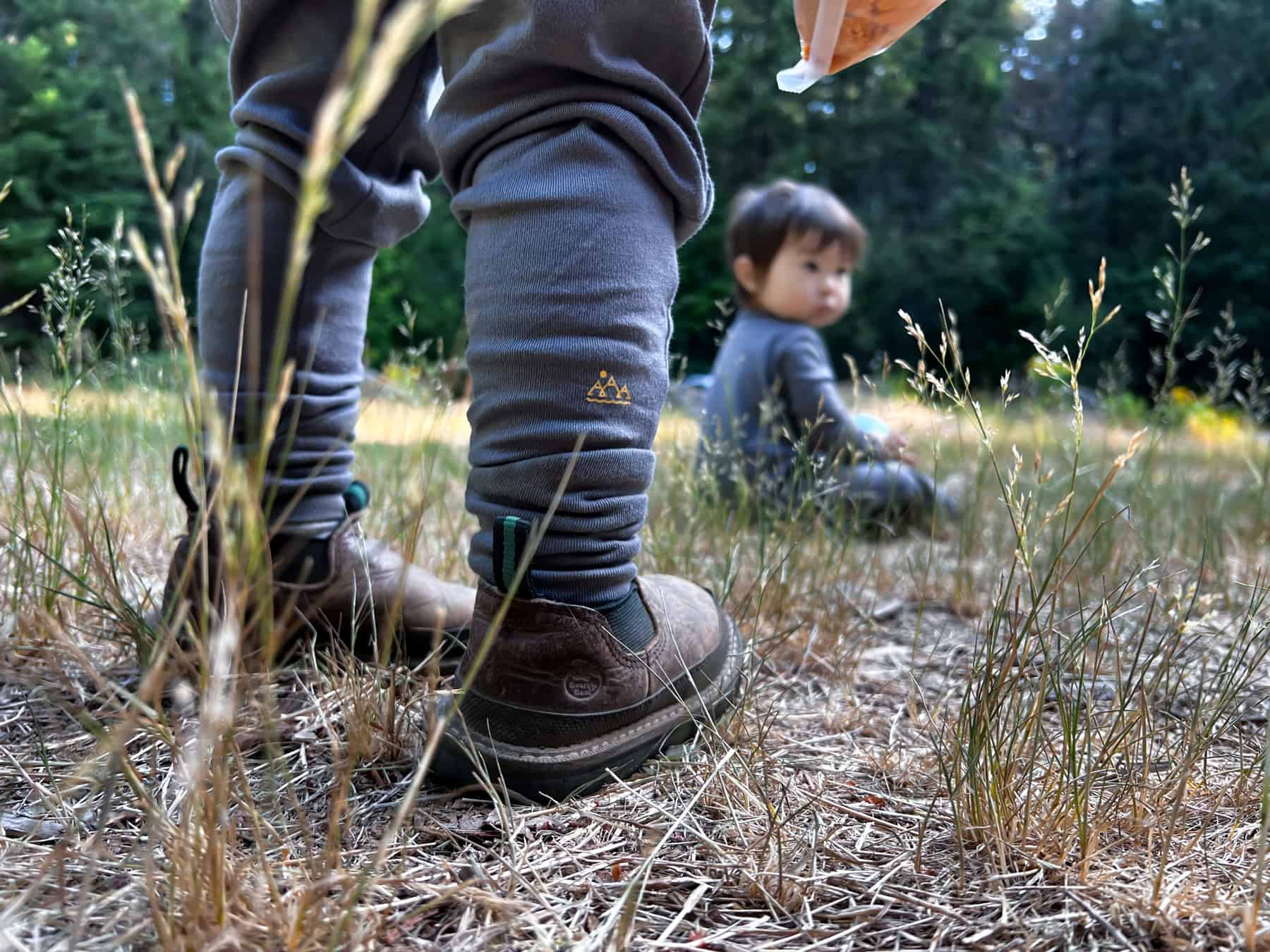
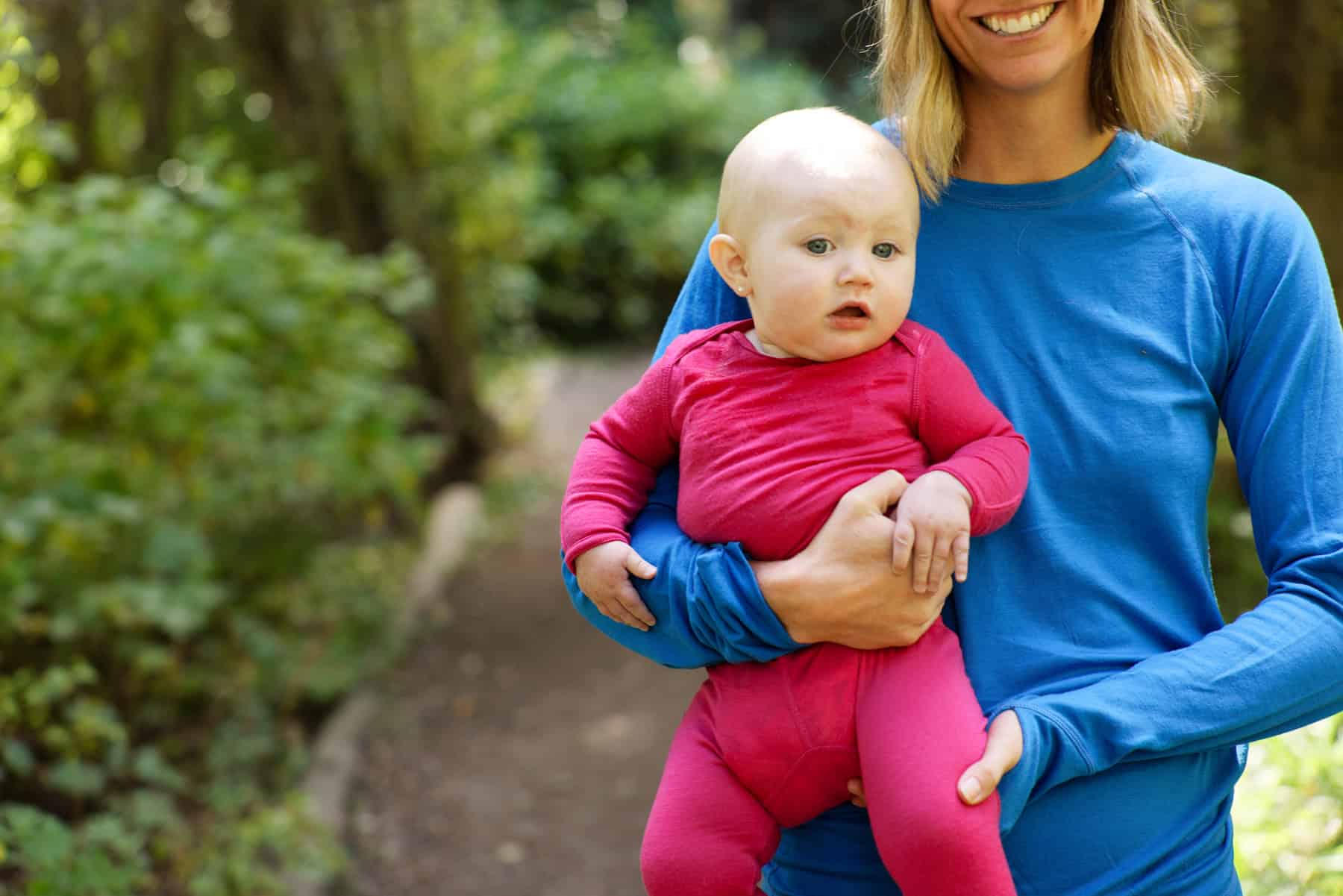
In Case of Emergency
Outdoor adventures come with risk, but you can minimize it with some preparation. Pack a full first aid kit, sunscreen, insect repellent, and appropriate clothing to protect everyone from the elements. Also, pack baby Tylenol. (When you don’t bring it, you’ll end up needing it.)
I recommend toting along some sort of satellite communication (just in case). We use the Garmin InReach Mini (Teton Mountaineering; tetonmtn.com). This is one category where cutting weight is not a priority. It’s always better to be safe than sorry when it comes to backpacking with babies; you want to be prepared for anything.
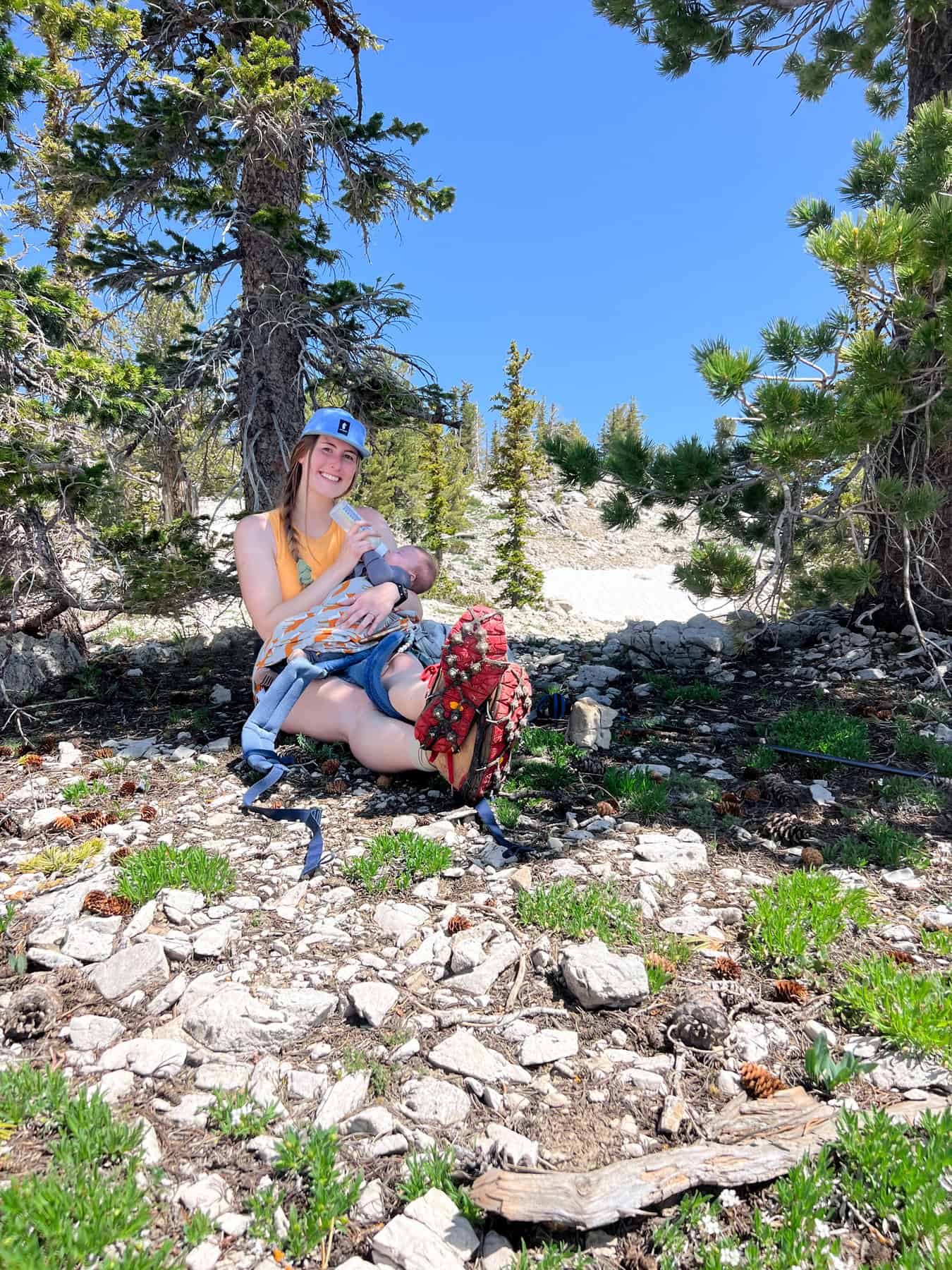
Vital Accessories
I recommend packing something that helps your baby feel more comfortable sleeping in a new place. At home, we use a sound machine in our baby’s room — the FridaBaby Portable Sound Machine (frida.com) — and we also take it camping. And a binky is a must (if your baby uses one) for soothing your little one on the trail and helping them fall asleep at night.
Backpacking with babies can be rewarding and memorable for families seeking adventure in the great outdoors. It’s all about enjoying the journey, making memories, and growing together. This summer you’ll find us backpacking with a toddler, AND A BABY, in tow.
Happy trails!
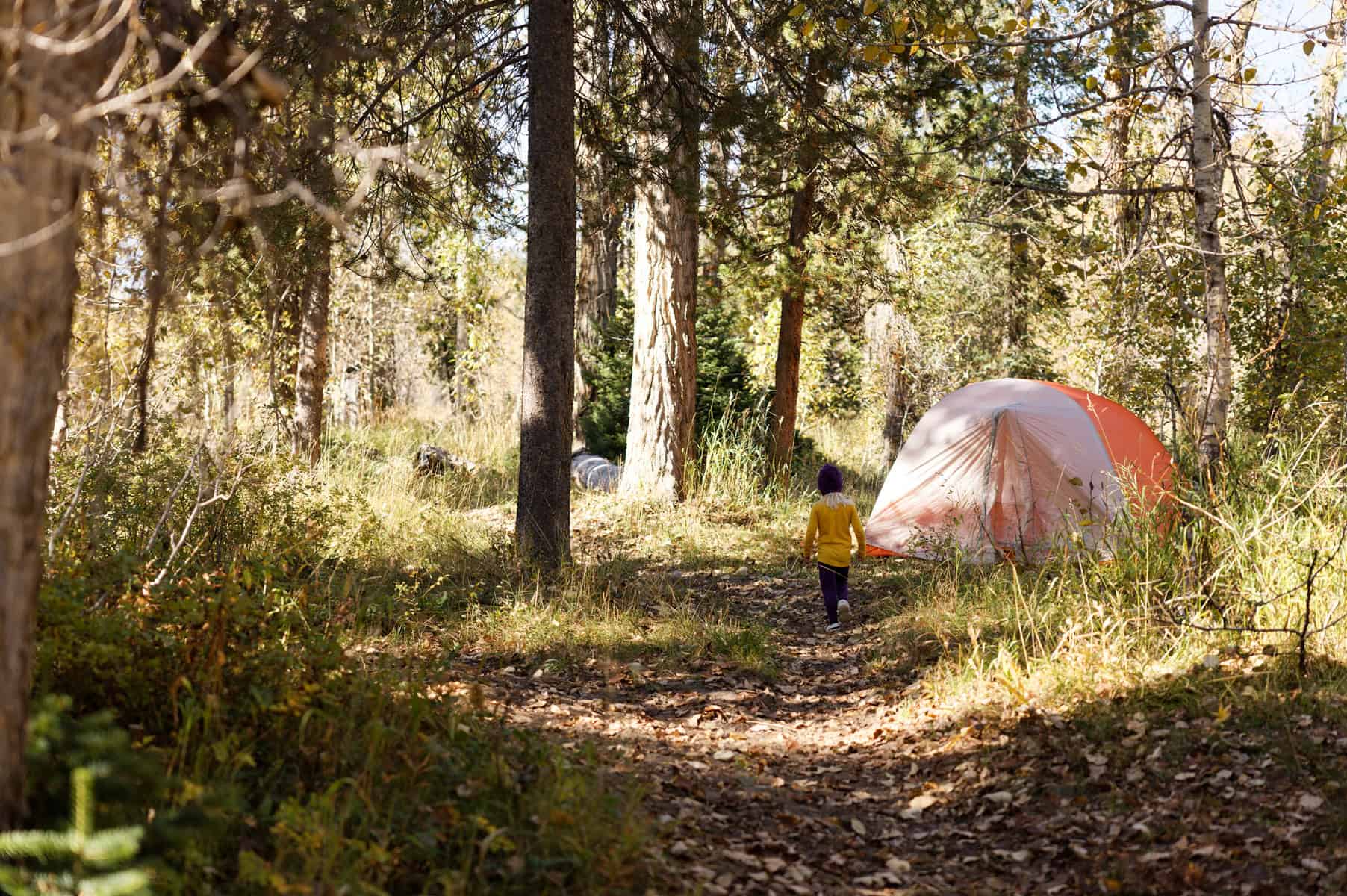
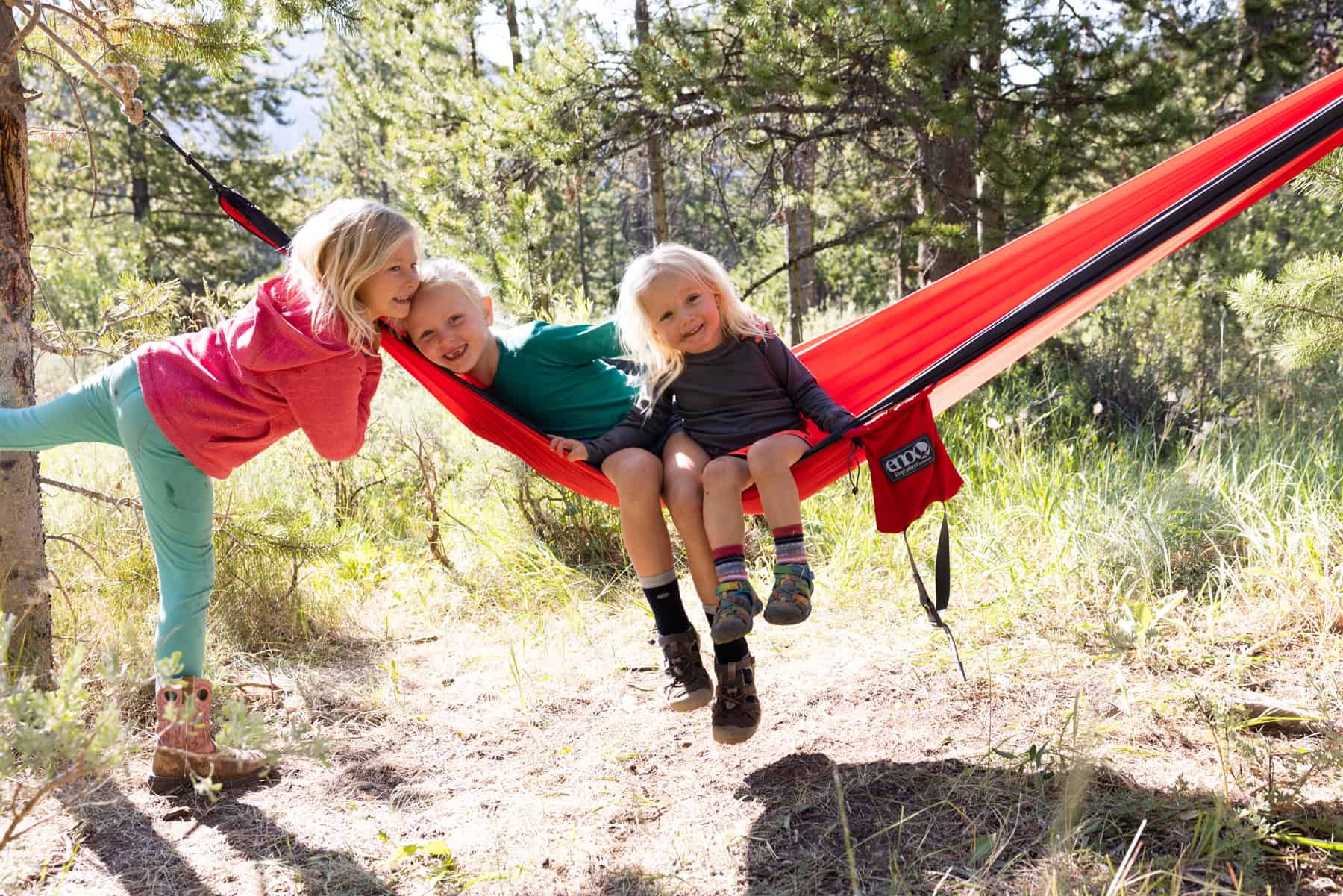
Diapers in the Backcountry
You forgot about this part, right? Here are a few tips to make carrying dirty diapers more manageable:
- Estimate how many diapers a day your baby will need, then pack a few extras. I also bring a half-full pack of wipes and a cloth diaper as a backup.
- Pack clean diapers in a waterproof bag. (I use a dry bag.) If a diaper becomes wet, it’s useless.
- Leave room in your pack for dirty diapers! Remember, unused diapers take up less room than dirty diapers, so plan the space accordingly.
- The weight of full diapers can really add up.
To lessen it, open wet diapers and leave them in the sun to dry out, but make sure not to leave them unattended to attract wildlife. - Use odor-proof bags or reuse your dehydrated meals bag (this is what I do), to contain the smell of dirty diapers. You can also bury poop in a cathole.
- Be sure to change your baby into a new diaper at the trailhead. That’s one less dirty diaper to carry!
- Use diaper rash cream to protect your baby’s bum between changings.


